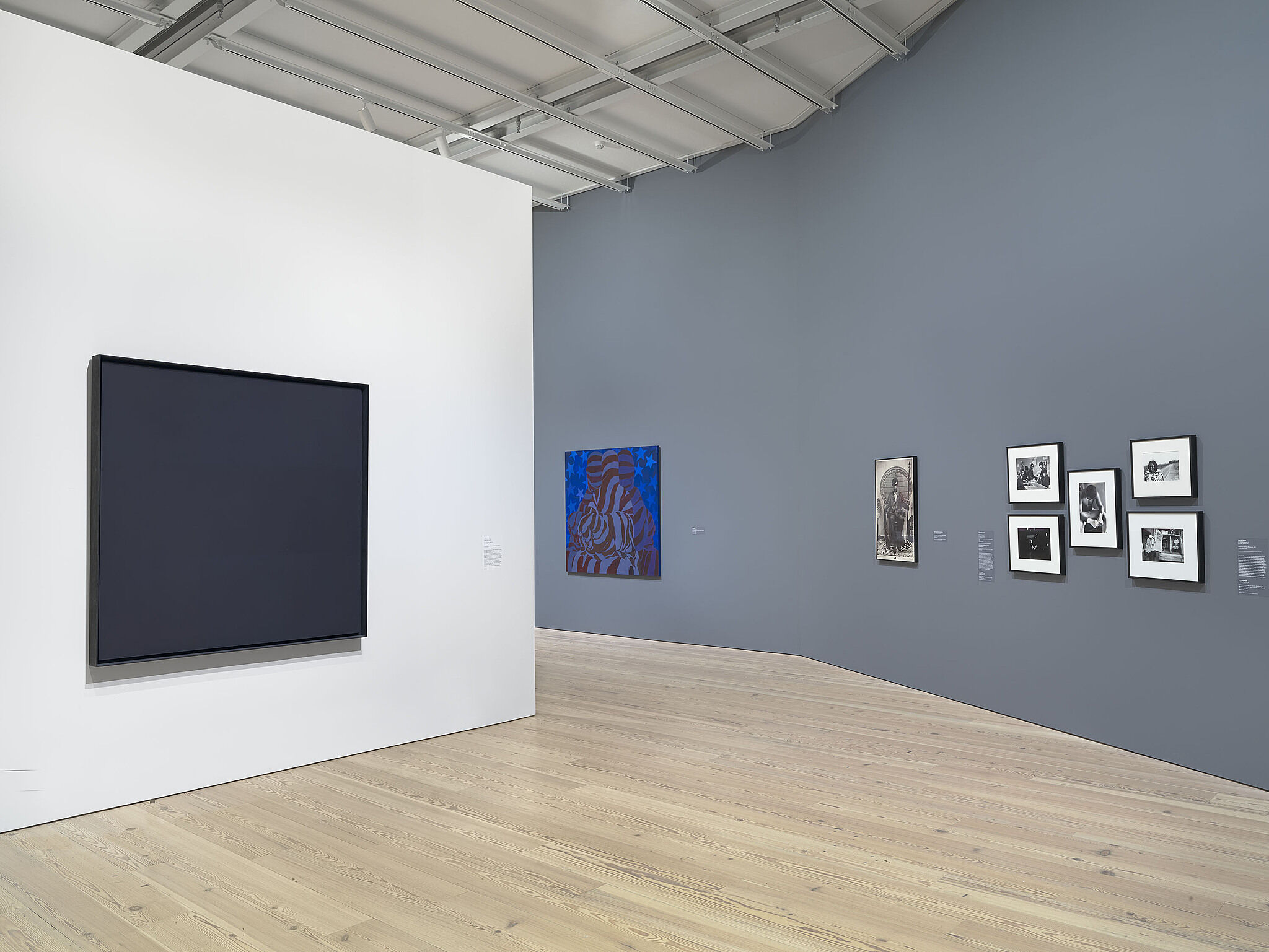An Incomplete History of Protest: Selections from the Whitney’s Collection, 1940–2017 | Art & Artists
Aug 18, 2017–Aug 27, 2018
An Incomplete History of Protest: Selections from the Whitney’s Collection, 1940–2017 | Art & Artists
Resistance and Refusal
1
American artists in the mid-twentieth century used ideas of resistance and refusal to reject inherited policies, politics, and social norms. For some, like Toyo Miyatake, the very act of making art was a form of disobedience. He documented his internment after smuggling camera parts into the camp in Manzanar, California, where he and other Japanese Americans were held during World War II. For Larry Fink, photographing the beatniks during the 1950s gave visibility to a population that formed its identity in opposition to a conformist cultural mainstream. Other projects, like those by Louis H. Draper and Gordon Parks, recorded the efforts of those fighting against racist politics and policies for the fundamental right to be part of society. Ad Reinhardt, working in the aftermath of World War II, defined his art mainly by what it was not. His black paintings were “non-objective, timeless, spaceless, changeless, relationless, disinterested.” Although described in aesthetic terms, Reinhardt’s disavowal can also be seen as a stand against the heroic cultural ideology that led to repression and war.
Artists
- John Ahearn
- Emma Amos
- Richard Avedon
- Badlands Unlimited
- Rudolf Baranik
- Bastian
- Black Panthers
- Andrea Bowers
- Mark Bradford
- AA Bronson
- Paul Burlin
- Andrew Castrucci
- Paul Chan
- Mel Chin
- Larry Clark
- Clergy and Laymen Concerned
- Sue Coe
- William N. Copley
- william cordova
- Crash
- Greg Daily
- Allan D'Arcangelo
- Bruce Davidson
- Daze
- Richard Deagle
- Jane Dickson
- Louis H. Draper
- Hock E Aye Vi Edgar Heap of Birds
- Melvin Edwards
- England Free Press
- Avram Finkelstein
- Larry Fink
- Hermine Freed
- Vincent Gagliostro
- Ja'Tovia Gary
- Theaster Gates
- General Idea
- Jeffrey Gibson
- John Giorno
- John Giorno
- Leon Golub
- Felix Gonzalez-Torres
- Gran Fury
- Nancy Grossman
- Gross National Product
- Group Material
- Guerrilla Girls
- Keith Haring
- Leslie Hewitt
- Charles B. Hinman
- Jenny Holzer
- International Union of Students
- Rashid Johnson
- Mary Kelly
- Edward Kienholz
- Barbara Kruger
- Kiyoshi Kuromiya
- Suzanne Lacy
- Tom Lafferty
- Lambert Studios, Inc.
- Annette Lemieux
- John Lennon
- Glenn Ligon
- Fred Lonidier
- A. Lunsford
- Michael Lynne
- Daniel Joseph Martinez
- Josephine Meckseper
- Julie Mehretu
- Toyo Miyatake
- Mobilization by the Antioch Bookplate Co.
- Donald Moffett
- Frank Moore
- Peter Moore
- Robert Morris
- Napalm Graphics
- National Peace Action Coalition
- Senga Nengudi
- Louise Nevelson
- New Mobilization Committee to End the War in Vietnam
- Northern California Peace Action Coalition
- Yoko Ono
- Gordon Parks
- Dan Patterson
- Don Peterson
- Irving Petlin
- Howardena Pindell
- Carl Pope
- Pro-Arts, Inc.
- Ad Reinhardt
- Marlon Riggs
- Faith Ringgold
- Kay Rosen
- Martha Rosler
- Robert L. Ross
- Santa Monica Moratorium Committee
- Dread Scott
- Brian Shannon
- Gary Simmons
- Leif Skoogfors, 1940-
- Jaune Quick-to-See Smith
- Jack Sonenberg
- SP/4 Vietnam
- Nancy Spero
- Tom Starace
- May Stevens
- Student Mobilization Committee to End the War in Vietnam
- Carol Summers
- the Gallery
- The Union of Vietnamese in the United States
- Tim Rollins and K.O.S.
- Mierle Laderman Ukeles
- United Women’s Contingent
- Unknown artist
- Various artists
- Vietnam Day Committee
- Vietnam Peace Parade Committee
- Vietnam Referendum '70
- Kara Walker
- William Weege
- David Weinrib
- Irving White
- David Wojnarowicz
- Joseph Wolin
- Women Strike for Peace
- Martin Wong
- Adja Yunkers

